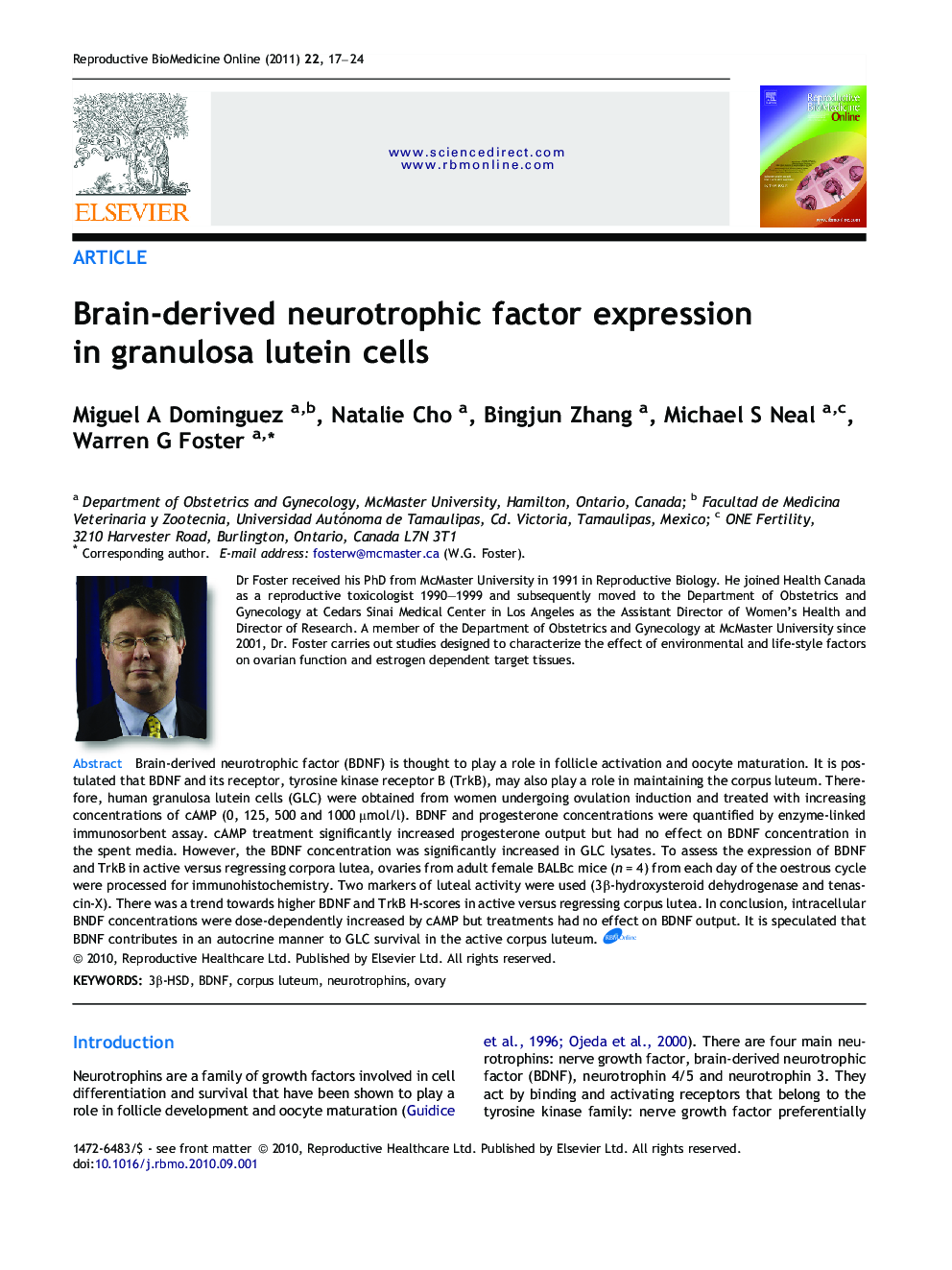| Article ID | Journal | Published Year | Pages | File Type |
|---|---|---|---|---|
| 3971805 | Reproductive BioMedicine Online | 2011 | 8 Pages |
Brain-derived neurotrophic factor (BDNF) is thought to play a role in follicle activation and oocyte maturation. It is postulated that BDNF and its receptor, tyrosine kinase receptor B (TrkB), may also play a role in maintaining the corpus luteum. Therefore, human granulosa lutein cells (GLC) were obtained from women undergoing ovulation induction and treated with increasing concentrations of cAMP (0, 125, 500 and 1000 μmol/l). BDNF and progesterone concentrations were quantified by enzyme-linked immunosorbent assay. cAMP treatment significantly increased progesterone output but had no effect on BDNF concentration in the spent media. However, the BDNF concentration was significantly increased in GLC lysates. To assess the expression of BDNF and TrkB in active versus regressing corpora lutea, ovaries from adult female BALBc mice (n = 4) from each day of the oestrous cycle were processed for immunohistochemistry. Two markers of luteal activity were used (3β-hydroxysteroid dehydrogenase and tenascin-X). There was a trend towards higher BDNF and TrkB H-scores in active versus regressing corpus lutea. In conclusion, intracellular BNDF concentrations were dose-dependently increased by cAMP but treatments had no effect on BDNF output. It is speculated that BDNF contributes in an autocrine manner to GLC survival in the active corpus luteum.Neurotrophins and their receptors play a central role in nerve cell proliferation, differentiation, and survival. Members of the neurotrophin family and their receptors have been shown to be expressed in extra-neuronal tissues including the reproductive tract. Evidence has been brought forward in the literature which suggests that brain-derived neurotrophic factor (BDNF) is an intra-ovarian cytokine thought to play a role in the development of primordial follicles, folliculogenesis and oocyte maturation. We now postulate that BDNF and its receptor, tyrosine kinase receptor B (TrkB), may also play a role in maintaining the corpus luteum. In this study, human granulosa lutein cells (GLC) were obtained from women undergoing ovulation induction for IVF. GLC were treated with increasing concentrations of cAMP (0, 125, 500 and 1000 μmol/l). BDNF and progesterone concentrations were quantified by ELISA. cAMP treatment significantly increased progesterone output but had no effect on BDNF concentration in the spent culture media. However, the BDNF concentration was significantly increased in GLC lysates. To assess the expression of BDNF and TrkB in active versus regressing corpora lutea, ovaries from adult female BALBc mice were processed for immunohistochemistry. There was a trend towards higher mean BDNF and TrkB H-scores in active versus regressing CLs. We conclude that cAMP treatment dose-dependently increased intracellular BDNF concentrations but had no effect on BDNF output. Hence, we speculate that BDNF contributes in an autocrine manner to survival of GLC in active corpora lutea.
